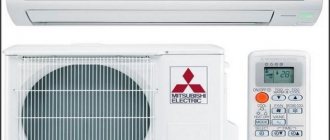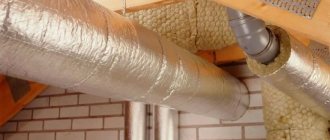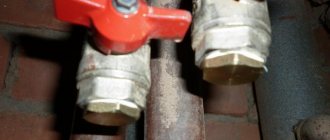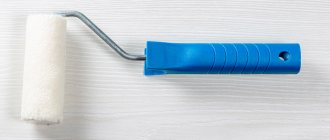Many people believe that a modern kitchen simply cannot do without a range hood.
A kitchen hood has recently become almost an obligatory component of a modern kitchen. It is believed that one cannot do without it. But to the question of why it is not possible and why it is necessary, very vague answers are often given. In addition, many users on the Internet raise the question of its complete uselessness, that the hood is nothing more than a tribute to fashion, imposed by active salesmen on the population. But is it really needed and why?
What is a hood
To begin with, you need to decide what it is. The hood is a system that includes a housing, a motor, a fan and filters. The engine powers it, the fan is necessary to create air draft, and the filters capture grease, soot, and foreign odors. To capture soot and odors, carbon filters and grease traps have been created.
The exhaust system provides the kitchen with purified air and prevents surface contamination with grease and soot.
All hoods are divided into:
- exhaust;
- circulation.
The exhaust hood has pipelines and carries air through them to the street or into a ventilation shaft. The circulation system does not have air ducts, and air purification occurs through filters, into which air is forced in with the help of a fan. The air circulates in the hood, is cleaned and again supplied to the room.
Each type of hood has its own advantages and disadvantages.
Faber Pareo (set)
This hood has an unusual shape, which attracts a lot of buyers. It has a closed housing with a hidden connection pipe inside. Four bright LEDs provide beautiful illumination and good lighting. The hood body itself is made of stainless steel. This greatly simplifies the maintenance of the device, since less dust will settle on it, and it is also not afraid of detergents. The most interesting thing here is that the hood has a telescope design. That is, it is equipped with a silent drive, which, if necessary, draws the structure to the ceiling itself. This is necessary in order to maximally absorb the smoke and fumes that collect at the top. After sucking in the smoke, the hood unfolds again, which looks very unusual and exciting. It has a built-in air filter that is dishwasher safe. A total of three speeds are available, there is a remote control and a timer. The height of the device will vary from 49.9 cm to 108.9 cm. The performance of the model is 520 cubic meters. m/h, and electricity consumption is 250 W.
Pros:
- Unusual and very effective design work;
- Reliable materials;
- High performance;
- Can be controlled via remote control;
- Product warranty - 2 years;
- There are three speeds;
- Washable filter.
Minuses:
- High noise level at maximum speed - 68 dB;
- High price;
- Suitable for high ceilings only.
Advantages and disadvantages
Exhaust hoods provide truly fresh air from outside, which is their main advantage. After all, they do not “drive” the same air around the room, like circulation ones. But their inconvenience lies in the fact that it is not always possible to install air ducts. It is especially difficult to organize such a hood in studio apartments. In addition, an exhaust hood can provoke heat loss, since if the air ducts are vented into a window, it must be open.
Important: installation of a range hood requires special skills and cannot be done by anyone without experience. In some cases, it is necessary to punch through ventilation holes, which can negatively affect the interior design solution and require repairs.
Circulating ones are convenient because there is no need to pull the air ducts. It can be done even where there are no ventilation ducts at all.
The circulation type of the hood allows its installation in any convenient place without any particular difficulties
Its other advantages:
- no heat loss;
- easy to install;
- can be installed in any home, even old ones, with clogged ventilation ducts.
If the house has plastic double-glazed windows, then a circulation hood may be preferable. Many users of hoods complain that when the hood is in operation, it draws in air from the bathroom and an unpleasant odor appears in the kitchen. This happens precisely if the house has plastic windows and an exhaust hood, the air ducts of which are tied to the ventilation duct. In this case, a low pressure zone is formed in a hermetically sealed room and air begins to be drawn in from the ventilation ducts of the riser. This leads to a simple conclusion - in a kitchen with sealed plastic windows, it is better to prefer a circulation hood.
Important: you should not install an exhaust system in a kitchen with a gas water heater, as this will disrupt the draft in the ventilation shaft and chimney and cause problems with air removal.
But in private houses with an existing ventilation system, exhaust systems are preferable.
In a kitchen with a gas heater, you should not use the hood while the heater is running.
The built-in type of exhaust system allows you to hide some of its elements in the closet
Which model should you choose? Decide by evaluating the features of each
Advantages of models with recirculation:
- well suited for kitchens with traditional gas stoves - they remove harmful impurities and grease from the atmosphere, but have little control over odor, and this is important for kitchens with electric stoves;
- easy to install - you can install it yourself;
- have a nice design;
- budgetary;
- save energy;
- do not “drive” heat out of the room.
Disadvantage: the need to replace filters occurs every 3-5 months, depending on the rate of operation.
Models with air ducts or flow-through have the following advantages:
- their productivity is higher;
- no filter replacement required.
Minuses:
- their installation requires connection to the kitchen ventilation system, therefore, installation will be more expensive and must be carried out by specialists;
- installation of an anti-return valve is required - otherwise “exhaust” air will flow into the room from the ventilation shaft;
- Not everyone likes the bulky hood of a flow-through hood - it spoils the design (unless you have a loft, of course!).
If it’s difficult to decide, there are models that combine both modes (exhaust with recirculation).
Purpose of the hood
A hood is needed in the kitchen primarily to clean the air from:
- gas combustion products;
- harmful substances formed during the cooking process;
- smells;
- burning;
- fat;
- soot.
It is known that over time in the kitchen, due to the operation of a gas stove, the ceilings and walls gradually turn yellow and a greasy coating appears on them. This plaque is difficult to wash off, as it consists of fat mixed with dust, burning particles and soot. It is impossible to prevent the appearance of plaque on surfaces without exhaust hood - microscopic particles of burning and fat will still form during cooking and get into the air, and then settle on the surface. The only solution is to capture these particles and remove them from the air before they reach the surfaces of the walls and ceiling. And this is the prerogative of the kitchen hood.
The exhaust system removes odors and gas combustion products from the room.
In addition, not everyone likes the smell of cooking food. Especially when it comes to the smell of fish. The hood in the kitchen is designed to remove any odors. This quality is especially valuable in a studio apartment and in any other houses where the kitchen is combined with a living room or dining room.
It is important to protect walls and furniture from settling of grease. If in the kitchen the walls and furniture are made of washable materials, then in the living rooms the furniture can be seriously damaged by grease. Therefore, hoods in studios are extremely relevant. And in the kitchen, its presence reduces the amount of grease that gets on the walls and furniture.
Based on all of the above, the conclusion follows: a hood is definitely needed. Especially when it comes to apartments where the kitchen is combined with other rooms or has no doors. This solution option is also often found, since doors are removed in small areas of the apartment in order to facilitate movement around it and increase the usable area.
Arguments for ventilation
Housewives in kitchens without ventilation face a number of problems that need to be corrected:
- Odors accumulate in the room. Over time, one overlaps with the other;
- Moisture concentration increases;
- The amount of oxygen decreases and carbon dioxide increases;
- Interior items become covered with a greasy coating.
This is a small list of troubles. But all misfortunes can be avoided if you properly organize the removal of dirty air. In other words, a ventilation system is installed in the kitchen.
A look from the other side
On the Internet you can often come across debates between opponents and supporters of hoods. Opponents argue that the hood in the kitchen is just a tribute to fashion imposed by manufacturers and, in fact, is absolutely useless. Moreover, some fear that it may be a source of pathogenic microorganisms, since various bacteria easily and simply multiply on the fat accumulated in it. This makes some sense. This is why it is necessary to constantly clean and replace grease traps.
Also, opponents of the hood argue that, both with and without it, there is no special burning and soot in the kitchen, the amount of which is greatly exaggerated by manufacturers of hoods. You can get rid of fat by covering the food you are preparing with lids. From this it follows that a hood is not needed.
Very often you can see the following picture: a person purchased a hood, but after some time he stops using it.
Reasons why the kitchen hood does not turn on:
- A person does not see a tangible difference;
- The hood is too noisy.
Purchasing a hood is not a priority for some
Is a hood needed?
How are things really going? If we consider the issue from all sides, it becomes clear that the advisability of the hood must be decided in each specific case individually.
In small kitchens and very small rooms, where there is practically no space, you can do without a hood, since the flow of fresh air and its purification can be provided by an open window. In large rooms this will not solve the problem. Therefore, a hood is most likely needed here. Next, you will need to decide which one to choose - exhaust or circulation. The choice must be based on the above-mentioned advantages and disadvantages of certain systems.
You also need to choose the right hood. It is worth remembering that if the model makes noticeable noise during operation, then soon it will no longer be turned on and the purchased hood will turn out to be a very useless purchase. Therefore, attention should be paid to low-noise models.
The feasibility of installing a hood depends on the priorities of the owners
Choosing the right hood will save you from the disadvantages of using it
In homes where there is a ventilation and air conditioning system, an exhaust hood model in the kitchen is without a doubt preferable. In this case, complete air purification can be ensured. In most ordinary city apartments, an exhaust system is not needed, since it will only create additional problems and draw air from the ventilation shafts, which is not particularly fresh. Therefore, it is better to either completely abandon the hood in the kitchen, or choose a circulation model. By the way, then it will be possible to save on installation.
And lastly: even if there is no burning and soot in the kitchen in noticeable quantities, this does not mean that it does not produce substances harmful to health, invisible to the eye, but harmful to health. We are talking primarily about products formed during gas combustion. These substances are perfectly captured by the hood. Therefore, if the house has an electric stove, then the hood may be a useless device. But if there is a gas stove in the kitchen, then a hood is needed in any case, as it will help remove toxic substances formed during the combustion of gas.
Faber Zoom Isola XA 40
The small-sized device is suitable for medium and large rooms where you need to quickly purify the air. Its capacity is 830 cubic meters. m/h, and the noise level does not exceed 66 dB, even at the highest loads. The body is made of metal, stylized as chrome. The lighting is provided by 4 light bulbs, which are very bright. There are 3 speeds and an integrated timer is available. Built-in sensors will notify the user that it is time to clean the air. The control itself takes place via the remote control. A special clogging indicator will tell you when it's time to clean the filter.
Pros:
- High build quality;
- High performance;
- Bright backlight;
- There is a contamination indicator, a timer and an intensive mode;
- Three types of speed;
- Remote control;
- Small sizes.
Minuses:
- No carbon filter;
- High price.











